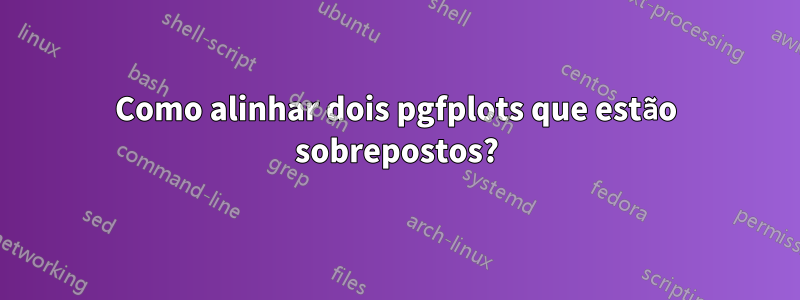
Sou bastante novo no pgfplots.
Estou tentando representar graficamente duas coisas e fazê-las traçar lado a lado. No entanto, quando uso subfigura, meus gráficos (e rótulos de eixos) se sobrepõem. Como posso consertar isso?
\documentclass{amsart}
\usepackage{amsthm, amsfonts, amsmath, amssymb, mathrsfs, enumerate,graphicx}
\usepackage{pgfplots} %For creating plots inside LaTeX itself
\usepackage{subcaption} %To create subfigures
\begin{document}
\begin{figure}
\centering
\begin{subfigure}{.45\linewidth}\centering
\begin{tikzpicture}
\begin{axis}[
ymin=0, xmin=0,
%grid=major, % activate major grid lines
xlabel=$\text{radius, }r$,
ylabel=$\text{concentration, }c$,
title={Steady state concentration},
title style={yshift=1.5ex},
axis on top, % descriptions over filled area
legend pos=outer north east, % customize legend
]
\addplot[smooth,blue,domain=0.5:2]
{((1-0.00167)*ln(x)+0.00167*ln(0.5)-1*ln(2))/(ln(0.5)-ln(2))} ;
\end{axis}
\end{tikzpicture}
\caption{Steady state species concentration profile. }
\end{subfigure}
\begin{subfigure}{.45\linewidth}\centering
\begin{tikzpicture}
\begin{axis}[
ymin=0, xmin=0,
xlabel=$\text{radius, }r$,
ylabel=$\text{chemical potential, }\mu^{c^*}$,
title={Steady state chemical potential},
title style={yshift=1.5ex},
axis on top, % descriptions over filled area
legend pos=outer north east, % customize legend
]
\addplot[smooth,blue,domain=0.5:2]
{8.31*310*ln(((1-.00167)*ln(x)+.00167*ln(0.5)-1*ln(2))/(ln(0.5)-ln(2))/.00167)} ;
\end{axis}
\end{tikzpicture}
\caption{Steady state chemical potential profile}
\end{subfigure}
\caption{Illustration of analytical steady state solution.}
\end{figure}
\end{document}
Responder1
O problema \begin{tikzpicture}[scale=0.65]é que as fontes também são dimensionadas, fazendo com que pareçam menores. Você pode ajustar a largura dos gráficos com a opção widthfornecida por pgfplots. Você pode fazer isso para todos os gráficos adicionando
\usepackage{pgfplots} %For creating plots inside LaTeX itself
\pgfplotsset{width=2in} %%<-------------------- this
ou apenas para gráficos específicos, adicionando-o às `opções de eixo como
\begin{eixo}[largura=2in, ymin=0, xmin=0, . .
Agora as fontes permanecem com o mesmo tamanho. Além disso, você pode scale only axis,dimensionar apenas o eixo sem considerar os rótulos de escala. E por último, você pode querer adicionar
ylabel style={overlay, anchor=north,}, %%% <-- this added
para que os rótulos fiquem um pouco mais próximos do eixo y.
\documentclass{amsart}
\usepackage{amsthm, amsfonts, amsmath, amssymb, mathrsfs, enumerate,graphicx}
\usepackage{pgfplots} %For creating plots inside LaTeX itself
\usepackage{subcaption} %To create subfigures
%\pgfplotsset{width=2in}
\begin{document}
\begin{figure}
\centering
\begin{subfigure}{.45\linewidth}\centering
\begin{tikzpicture}
\begin{axis}[
width=\linewidth, %%<----- here
scale only axis, %%% <-- this added
ymin=0, xmin=0,
%grid=major, % activate major grid lines
xlabel=$\text{radius, }r$,
ylabel=$\text{concentration, }c$,
ylabel style={overlay, anchor=north,}, %%% <-- this added
title={Steady state concentration},
title style={yshift=1.5ex},
axis on top, % descriptions over filled area
legend pos=outer north east, % customize legend
]
\addplot[smooth,blue,domain=0.5:2]
{((1-0.00167)*ln(x)+0.00167*ln(0.5)-1*ln(2))/(ln(0.5)-ln(2))} ;
\end{axis}
\end{tikzpicture}
\caption{Steady state species concentration profile. }
\end{subfigure}%
\hfill
\begin{subfigure}{.45\linewidth}\centering
\begin{tikzpicture}
\begin{axis}[
width=\linewidth, %%<-------- here
scale only axis, %%% <-- this added
ymin=0, xmin=0,
xlabel=$\text{radius, }r$,
ylabel=$\text{chemical potential, }\mu^{c^*}$,
ylabel style={overlay, anchor=north,}, %%% <-- this added
title={Steady state chemical potential},
title style={yshift=1.5ex},
axis on top, % descriptions over filled area
legend pos=outer north east, % customize legend
]
\addplot[smooth,blue,domain=0.5:2]
{8.31*310*ln(((1-.00167)*ln(x)+.00167*ln(0.5)-1*ln(2))/(ln(0.5)-ln(2))/.00167)} ;
\end{axis}
\end{tikzpicture}
\caption{Steady state chemical potential profile}
\end{subfigure}
\caption{Illustration of analytical steady state solution.}
\end{figure}
\end{document}

Responder2
usar para ambos
\begin{tikzpicture}[scale=0.65]
...


